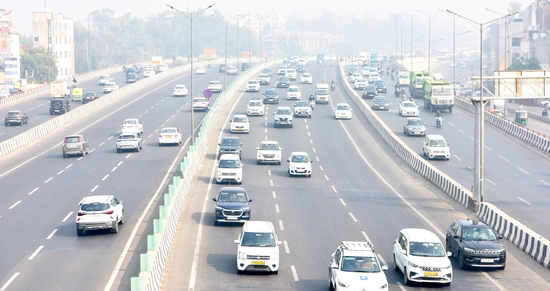The Supreme Court on Tuesday expressed serious concern over continuing illegal mining in the Aravalli hills and gave the Centre a final two-month deadline to arrive at a common definition of the ecologically crucial mountain ranges.

A bench headed by chief justice Bhushan R Gavai told a Centre-led committee that it had already missed its original deadline of July 2024 and gave it a “last opportunity” to complete the task, with no further extensions. The matter has been listed for hearing in July.
“The order is of May 9, 2024. Meanwhile, the states must tell us what action you are taking to ensure illegal mining does not take place,” said the bench, which also comprised justice AG Masih.
Senior advocate K Parmeshwar, assisting the court as amicus curiae, painted a grim picture of the situation. “There is rampant illegal mining going on in Aravalli hills. The regulatory mechanism is messed up. If the states had any interest to protect the Aravalli hills, they should have come out with the report by now.”
The committee, comprising the Union environment ministry secretary, forest department secretaries from Delhi, Haryana, Rajasthan and Gujarat, and representatives of the Forest Survey of India, Geological Survey of India and Central Empowered Committee, has sought extensions three times since the original two-month deadline laid down through the May 9, 2024 order.
Additional Solicitor General Aishwarya Bhati, appearing for the Centre, said the committee had held joint meetings and the report was in its “last leg of preparations.”
The need for a uniform definition arose after the Central Empowered Committee submitted a report showing how the Aravalli hills are either undefined or defined in ways that facilitate illegal mining.
A glaring example is Rajasthan’s definition that includes only hills above 100 metres as part of the Aravallis, enabling mining activities between 0-99 metres. The court had earlier criticised this “100-metre rule” as very problematic, remarking: “If the area does not have the support of slopes, the land will become barren. What is the purpose of having some structure as Aravalli with other slopes all ruined.”
A 2018 Forest Survey of India report revealed that 31 hillocks had disappeared due to rampant illegal mining, while over 3,000 illegal mining sites were discovered across the Aravallis in Rajasthan and Haryana.
The court also addressed applications from miners seeking lease renewals. Senior advocate Maninder Singh, representing marble producers in Rajasthan, said their leases had expired in March and the state had refused renewals citing the May 9 order.
“We are in favour of the report being produced at the earliest. But till then, our livelihoods have stopped,” Singh said.
The court clarified that restrictions applied only to new licences, not renewals, and directed states to respond to the miners’ applications.
Parmeshwar suggested that once the definition is finalised, individual mining applications should consider the carrying capacity of the entire Aravalli range for the next 50-100 years. He also recommended enforcing a ban across the entire range and ensuring no new mining leases are granted.
The Aravalli range serves as a crucial climate barrier, blocking eastward winds from the Thar desert and preventing Delhi from experiencing dry, arid conditions.
The Supreme Court had banned mining activities across the entire Aravalli region in Haryana and Rajasthan in 2002 after Central Empowered Committee reports indicated that illegal mining had consumed 25% of the range.
The court has previously indicated that a balance must be struck between sustainable development and environmental protection.

